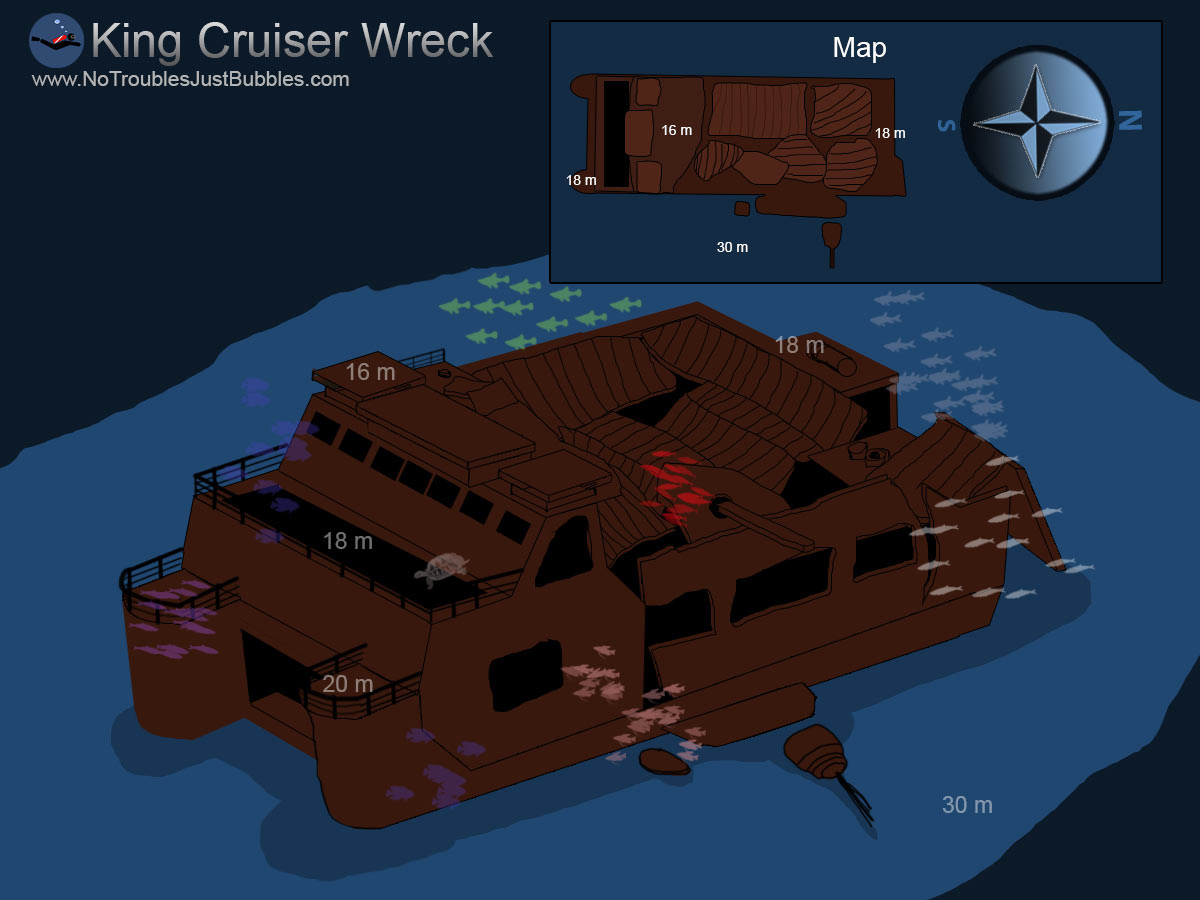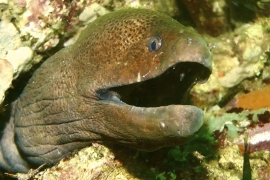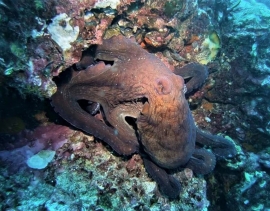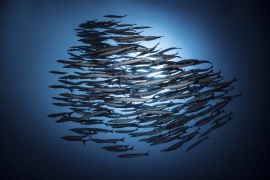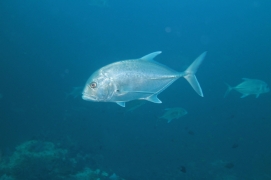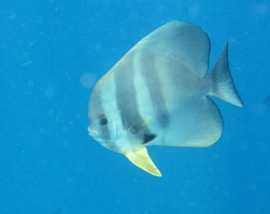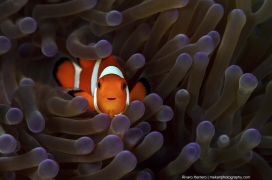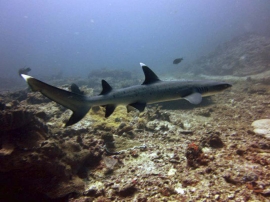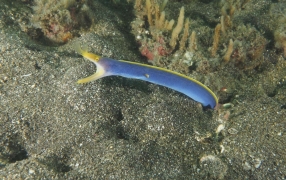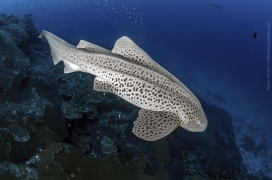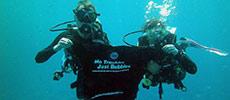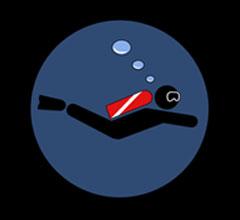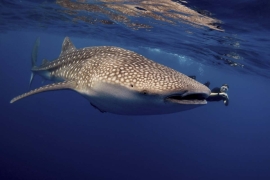
King Cruiser Wreck Liveaboard Diving
This is a very popular dive site for mostly day trip dive boats from Phuket, as well as from Phi Phi and Koh Lanta. Some diving liveaboards also visit as part of a short diving liveaboard cruise around Phuket, Phi Phi, maybe Koh Haa and/or Hin Daeng. Although Open Water divers can dive at MS King Cruiser, it’s better for those who are certified deeper. The structure is deteriorating, but the marine life is growing all the time. Sea conditions are ok, but dives need to be planned carefully to get the best out of it.

Visibility is not usually great, but there is lots to see close-up. Surface waves can be a small problem sometimes, but divers here are normally experienced and the boats that visit employ experienced guides and tour leaders. There are two mooring lines. NDL times need to be carefully monitored due to most of the dive being at depth, and then up to a safety stop. Boat traffic means that surfacing divers need to be aware, and the use of SMBs is highly recommended.
How did King Cruiser become a wreck?
In 1997 the boat was being used to ferry passengers back and forth from Phuket to Phi Phi. It was designed as a car ferry, but there are no roads on Phi Phi, so for these journeys only passengers were on board. En route in May 1997, the captain managed to sail way off course and straight into the well-known and map-chartered Anemone Reef. Rumour has it that this was deliberate, but we will never know. Nobody died in the accident, but an old lady suffered serious injuries, including a broken back.
How big and how deep is King Cruiser? Can it be penetrated?
It is 85 metres long and until recently its shallowest parts were less than 10 metres from the surface. However, in recent years the peripheral parts have broken away, meaning its shallowest parts are at around 16-18 metres. At its deepest, divers can explore around 31 metres, depending on the tide. In the past, there were several areas to penetrate, but nowadays it has become almost impossible.
- Sunk: 1997
- Type: Car ferry
- Length: 85m
- Beam: 25m
- Height: 30m
Conditions at King Cruiser Wreck
When to dive at King Cruiser Wreck
The diving high season for Phuket is October to May, but the dive site is open all year. December to March offers the best conditions, but also the busiest times.
What type of dive site is King Cruiser Wreck
MS King Cruiser was a car ferry, but its destination is a small island with no roads. Therefore it only carried foot passengers when in Thailand. It was an 85m long ship. You can dive the whole wreck in one dive, but penetration has become dangerous and is no longer advised.
Where is King Cruiser Wreck?
King Cruiser Wreck is located approximately halfway between Phuket's southeast coast and Koh Phi Phi. That means dive centres' boats from both islands can come to visit it for day trips. Koh Lanta is a little further away, and day trips from there may include 3 dives, but at different sites.
King Cruiser is a wreck because it hit Anemone Reef, which is just a few hundred metres away. Koh Doc Mai & Shark Point are also nearby.
How to get to King Cruiser Wreck
Most divers visit King Cruiser as part of a two-dive or three-dive day trip from Phuket, Koh Phi Phi or Koh Lanta. But to better enjoy the dive site join a liveaboard cruise that can dive there early in the morning or at sunset. This way you will not be at the wreck when it's busy.
Who can dive at King Cruiser Wreck
In the past, the shallowest part of the wreck was at 10 metres, but this has since collapsed, meaning that the shallow parts are at 17-18 metres. Also, with its growing popularity, being an experienced diver will help you to pay attention to where your buddy or Divemaster guide are. Currents can be an issue, but with several other good dive sites in the area, it’s easy to change the order of dives for the day.
Open Water or inexperienced divers of any level might find the wreck a bit daunting because of the depth, possibly reduced visibility and the number of boats and divers there during high season.
What marine life can you see at King Cruiser Wreck?
The marine life at King Cruiser Wreck is extremely abundant. Lots of schooling fish live here, as well as predators which come to visit. Sightings of large & special species, such as Whale Sharks and Manta Rays are not common, but not unheard of. There are lots of Sea Urchins, Lionfish and Scorpionfish to look out for but in general, it’s a fantastic dive site if the sea conditions are ok.
Summary of King Cruiser Wreck
King Cruiser wreck is a great dive site, but its popularity means that it's busy (with divers) every day of the high season. Visibility is not as good as some other locations in Thailand's Andaman Sea, but this is more than made up for by the huge amount of marine life at the wreck. This includes resident species, plus plenty of predators that visit, and some large creatures that come to be cleaned. There are at least three good dives very nearby, meaning that if the currents or number of boats cause the order of dive sites to change this is no problem.
Divers need to be certified deeper than 18 metres because the wreck is 18-30 metres now that the top of its structure has collapsed.
